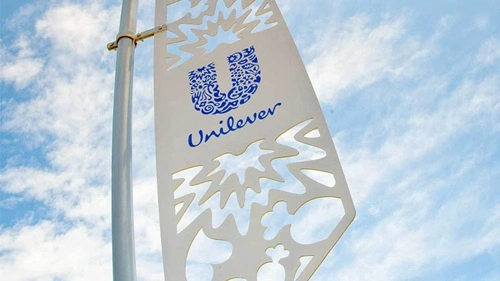Unilever, a household name across the globe, continues to command significant influence in the fast-moving consumer goods (FMCG) sector. With a portfolio spanning over 400 brands, including Dove, Lifebuoy, Knorr, Surf Excel, and Magnum, the British-Dutch conglomerate has firmly entrenched itself in markets worldwide. In India, Unilever operates through its subsidiary Hindustan Unilever Limited (HUL), a leader in the domestic FMCG space. As of 2025, the company’s focus on sustainable living, digital transformation, innovation, and emerging market expansion has positioned it for steady growth despite global economic challenges.
In today’s dynamic business landscape, a SWOT (Strengths, Weaknesses, Opportunities, Threats) analysis helps understand Unilever’s core capabilities, address areas of improvement, and identify growth avenues while preparing for potential risks. Let’s explore the SWOT analysis of Unilever.

Strengths
1. Diverse and Trusted Brand Portfolio
Unilever owns some of the world’s most iconic brands across beauty, personal care, food & refreshment, and home care. This diversified portfolio allows it to tap into various consumer segments, reducing dependency on any single product line or region. In India, brands like Pond’s, Lux, Vim, and Brooke Bond Red Label enjoy deep consumer trust and high brand equity.
2. Global Presence and Market Penetration
Operating in over 190 countries, Unilever has a vast geographical footprint. This not only provides revenue stability but also enables economies of scale. Its presence in both developed and emerging markets like India, Indonesia, Brazil, and Nigeria ensures consistent growth opportunities.
3. Strong Sustainability Agenda
Unilever’s commitment to sustainability is central to its business strategy. Its “Compass” strategy, launched in 2020, emphasizes environmental and social responsibility. The company aims to achieve net-zero emissions across its value chain by 2039 and ensure a deforestation-free supply chain by 2025.
4. Robust Supply Chain and Distribution Network
Unilever has built an agile and efficient supply chain, particularly in India, where HUL has over 8 million retail outlets. Its distribution excellence, even in rural markets, offers a competitive edge, especially during disruptions such as the COVID-19 pandemic or geopolitical conflicts.
5. Digital and Technological Advancements
Unilever is investing significantly in digitalization, using AI, data analytics, and automation across its operations. Platforms like “UShop” and partnerships with e-commerce giants have accelerated its direct-to-consumer (D2C) channels. Moreover, tools like the “People Data Centre” provide real-time consumer insights, aiding rapid innovation.
Weaknesses
1. Dependence on Third-Party Suppliers
Unilever relies heavily on third-party vendors for raw materials, packaging, and logistics. Any disruption in these areas can impact production and profitability, as seen during supply chain crunches triggered by geopolitical tensions or pandemics.
2. Exposure to Currency and Economic Volatility
Operating across multiple countries exposes Unilever to currency fluctuations, inflation, and economic downturns. Weakening consumer demand in key regions can affect its margins and long-term growth.
3. Slow Innovation in Some Product Lines
While Unilever has pioneered many innovative products, certain legacy brands have witnessed stagnation in markets where competitors have introduced more agile, niche, and premium alternatives. This is particularly true in the personal care segment, where startups are capturing young, digitally-savvy consumers.
4. Complex Organizational Structure
Managing hundreds of brands across diverse markets can lead to operational inefficiencies and increased managerial complexity. Ensuring strategic alignment across global teams can be challenging and may hinder responsiveness.
Opportunities
1. Rising Demand for Health & Wellness Products
With consumers becoming more health-conscious post-pandemic, there’s growing demand for clean-label, organic, and functional foods. Unilever can leverage this shift by expanding its offerings in plant-based foods, low-sugar beverages, and Ayurvedic personal care, especially in markets like India.
2. Expansion in Emerging Markets
Markets in Asia, Africa, and Latin America present immense growth potential due to rising incomes, urbanization, and favorable demographics. India remains a strategic growth engine for Unilever, with HUL contributing significantly to its global revenue.
3. Sustainable and Ethical Products
Consumers increasingly prefer brands with purpose. Unilever’s sustainability-first approach allows it to position its products as environmentally and socially responsible, thereby appealing to younger generations and ESG-conscious investors.
4. Digital Commerce and D2C Platforms
E-commerce in FMCG is booming, and Unilever’s investment in digital platforms, influencer marketing, and data-led personalization can boost its online sales. Collaborations with tech platforms and expansion into quick-commerce channels like Blinkit and Zepto in India are steps in the right direction.
5. Acquisitions and Strategic Partnerships
Unilever continues to acquire innovative brands such as Paula’s Choice (skincare) and Tatcha. These acquisitions not only add to its premium portfolio but also offer access to new markets and niche consumer segments.
Threats
1. Intense Market Competition
The FMCG sector is fiercely competitive, with global giants like P&G, Nestlé, Colgate-Palmolive, and local startups vying for market share. In India, players like Patanjali, Dabur, and Mamaearth are disrupting traditional brand loyalty.
2. Changing Regulatory Environment
New environmental, health, and trade regulations across regions may require product reformulation or operational changes, increasing compliance costs. Unilever must remain agile to adapt quickly.
3. Consumer Behavior Shifts
Modern consumers are more informed and conscious, demanding transparency, ethics, and customization. Failure to meet evolving preferences may lead to brand alienation.
4. Cybersecurity and Data Privacy Risks
As Unilever deepens its digital transformation, risks related to data breaches and cyber threats grow. Maintaining robust cybersecurity protocols is critical to safeguarding brand reputation and consumer trust.
Conclusion
Unilever stands as a resilient global leader in the FMCG industry, backed by strong fundamentals, a diversified product base, and a proactive approach to sustainability and digitalization. Despite challenges such as fierce competition and economic uncertainties, the company is well-positioned to capitalize on emerging consumer trends and technological advancements.
With strategic investments in innovation, sustainability, and market expansion, Unilever continues to evolve as a purpose-driven organization, reaffirming its commitment to making sustainable living commonplace. As we look ahead, Unilever’s ability to blend legacy strength with future-forward thinking will be key to maintaining its competitive edge in the global marketplace.

Meet Suhas Harshe, a financial advisor committed to assisting people and businesses in confidently understanding and managing the complexities of the financial world. Suhas has shared his knowledge on various topics like business, investment strategies, optimizing taxes, and promoting financial well-being through articles in InvestmentDose.com

